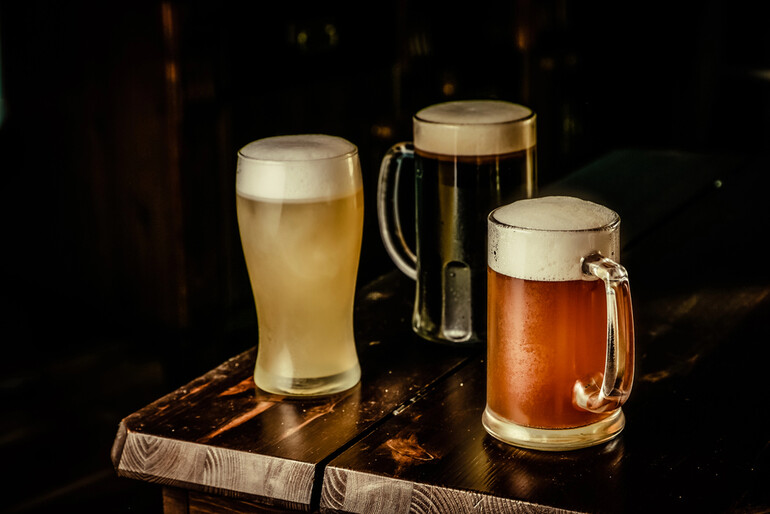It usually starts with a pause.
You take a sip. Someone to your left leans back and says, “Big mosaic punch upfront. Almost catty, but clean.”
You feel… unsure. You didn’t get that.
But you nod anyway.
Maybe you missed it. Maybe they’re just more experienced. Maybe it’s not worth contradicting someone with a BJCP badge hanging from their lanyard at your local homebrew club meeting. And just like that, you’ve agreed to something your palate never confirmed.
In the world of homebrewing, where feedback often comes from peers, mentors, and certified judges, flavor becomes as much a social construct as a sensory experience. From recipe swaps to club tastings and judging panels, the dynamic can unintentionally shape how we perceive what’s in the glass. We like to think flavor is personal, but more often than not, it’s social.
The Casino Effect: Social Risk and Reward
This impulse — to align with the group, to nod along rather than disrupt the flow — isn’t unique to tasting circles. It plays out anywhere social behavior intersects with uncertainty and perceived risk.
In online gambling environments, for instance, players frequently mimic others’ moves not because of sound analysis, but because of crowd momentum. Even the moment of 7bitcasino login is less about individual strategy and more about entering a gamified space designed to stimulate fast, emotionally charged decisions — often driven by visible wins, chatroom hype, and the subtle urgency of timed bonuses. Nobody wants to be the one who didn’t follow the rules. Everyone wants in — even if they’re unsure why.
Whether it’s beer or blackjack, the outcome matters less than belonging. And in both, we often fear standing apart more than being wrong.
Tasting or Performing?
Let’s be honest: in any group setting, the moment someone identifies a flavor, that perception becomes contagious. Once “grapefruit pith” or “wet hay” is mentioned, it’s hard not to start searching for it. And once a few heads start nodding, the rest follow — or fall silent. We call this tasting. Sometimes, it’s acting.
Because the truth is, sensory memory is fragile. Flavor is subjective. And no matter how much we try to evaluate beer “objectively,” our brains are social first. In many homebrew clubs and judging circles, what you taste can become secondary to how well your description aligns with the group’s expectations.
This dynamic mirrors what plays out in other high-stimulation settings, from competitive brewing environments to taproom showcases, where feedback loops, peer reactions, and subtle performance pressures can shape perception. The psychology is familiar: speak with confidence, and few will challenge you. But hesitate, and you risk falling out of step with the group. For modern homebrewers and professionals alike, understanding this influence is key to developing more authentic sensory skills and creating a tasting culture.
Dunning-Kruger and the Flavor Expert Illusion
Ironically, the people most confident in what they “taste” aren’t always the most skilled. The Dunning-Kruger effect — a cognitive bias where people with low ability overestimate their expertise — is alive and well in homebrew circles. A confident declaration (“definitely phenolic, classic chlorophenol from hose water”) can dominate a conversation, even if it’s wildly off base.
Less confident tasters might doubt themselves, even when they’re closer to the truth. And so the cycle reinforces itself: assertiveness gets mistaken for accuracy, and doubt becomes silent agreement.
Culture Shapes Pressure
Not all clubs feel the same. The social dynamics of a homebrew group play a massive role in how honest people feel they can be. A competitive club, where medals, rankings, and status are front and center, tends to breed performance: tasting becomes a test. No one wants to seem “off.”
In contrast, a collaborative, open club might encourage curiosity and challenge.
There’s space for “I didn’t get that, help me understand why you did.” Those clubs produce better brewers because they allow better thinking. The more hierarchical a group, the stronger the gravity of groupthink. The more exploratory it is, the more likely people are to speak from their senses and not from fear.
Can We Taste Alone?
So what’s the fix? Should we all just sit silently, scribbling tasting notes in the dark?
Not necessarily. But acknowledging that our brains are suggestible and that unique homebrew flavor language is performative is the first step to tasting with integrity. A few thoughts:
- Try silent tastings first, then share. You’ll be surprised how different your impressions become.
- Rotate who speaks first. Let the quiet brewer set the tone once in a while.
- Write your notes before hearing others. Then compare. See who leads — and who follows.
- Challenge the group gently: “I didn’t get that — what gave you that impression?”
Because the goal isn’t just to agree. The goal is to discover what’s actually in the glass, not what you’re supposed to say about it.
Final Sip
There’s nothing wrong with community. Homebrew clubs are where many brewers sharpen their palates, refine their recipes, and build lasting connections. But if growth is the goal, honesty has to be part of the process. That means acknowledging when you’re unsure, or when you simply don’t pick up what others claim to taste.
Next time, you don’t get the guava, the tannin, or the minerality? Say so. Your candor might invite a more thoughtful discussion or permit others to admit their uncertainty. And who knows, you might be the one everyone else was quietly deferring to all along.








